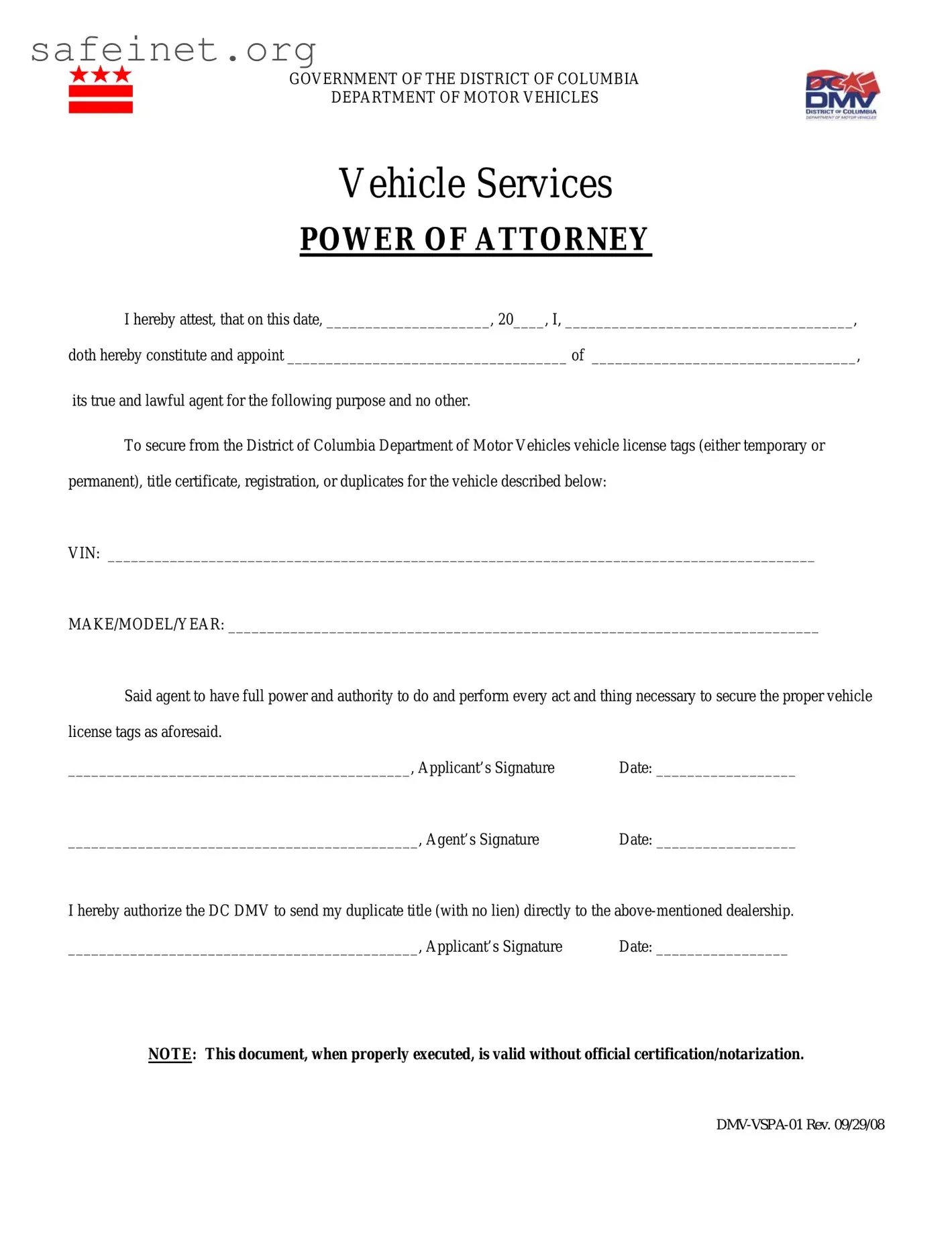What is the Vehicle POA DMV-VSPA-01 form?
The Vehicle POA DMV-VSPA-01 form is a Power of Attorney document specifically designed for vehicle transactions. It allows an individual, referred to as the principal, to appoint another person, called the agent, to act on their behalf regarding matters related to vehicle ownership, registration, or other DMV-related actions.
Why would I need to use this form?
This form is useful if you are unable to complete vehicle transactions in person due to various reasons such as being out of state, illness, or any other circumstance that prevents you from visiting the DMV. Assigning a trusted agent ensures that your vehicle-related matters can still be handled efficiently.
Who can I appoint as my agent?
You can appoint any individual as your agent, as long as they are of legal age and capable of managing the tasks you delegate to them. It’s important to choose someone you trust to handle your vehicle affairs responsibly.
How do I complete the form?
The form requires basic information about both the principal and the agent. This includes names, addresses, and contact information. Additionally, you will need to provide details about the vehicle in question, such as its make, model, and VIN number. Follow the instructions carefully to ensure accuracy.
Do I need to get the form notarized?
In most cases, notarization is not required. However, some jurisdictions might have different regulations. It is advisable to check local DMV requirements to verify whether notarization is necessary for your situation.
How long is the POA valid?
The Vehicle POA DMV-VSPA-01 form remains valid until you revoke it, the specific transaction is completed, or until a certain date if you specify one. It’s vital to formally revoke the document if you change your mind regarding the authority granted to your agent.
What if I need to revoke the POA?
If you decide to revoke the POA, you must provide written notification to your agent and the DMV, if applicable. It is also a good practice to complete a revocation form to avoid any confusion regarding your previous designation.
Can the agent charge for their services?
Yes, the agent may charge for services if there is a prior agreement in place. However, it is advisable to outline any fees and payment arrangements beforehand to ensure a clear understanding between both parties.

